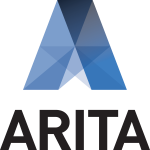| Dear Fellow Liquidator/Trustee in Bankruptcy
A new liquidator’s club has been established. The objective of the Association of Independent Insolvency Practitioners (“AIIP”) is to encourage small insolvency firms to collaborate and develop best practice procedures and precedents for its members.
To date, 80 of the 350 small firm liquidators and trustees in Australia have joined AIIP.
AIIP is a not for profit association.
Membership of AIIP is limited to registered liquidators and bankruptcy trustees.
I invite you to join AIIP by contacting Stephen Hathway or Ginette Muller as follows:
[deleted]
The annual membership is $20 and an application form is attached.
Discussion groups have been established in Sydney & Brisbane and AIIP hopes to roll out new discussion groups in each capital city as soon as practicable.
New Precedents For Your Firm
AIIP has a committee that is developing a set of liquidation, VA, receivership & bankruptcy precedents that will be compliant with the new laws.
AFSA & ASIC have agreed to consider, but not endorse, the AIIP precedents when they are finalised.
AIIP members will be able to purchase and immediately use the new precedents or use the AIIP precedents as a guide when amending their own existing precedents.
The projected cost of the precedents is uncertain, but my preliminary estimate is about $2k per member.
I am hopeful the costs can be reduced through increasing the AIIP’s membership. I encourage you to invite other small firm insolvency practitioners to join AIIP.
If you wish to offer assistance to this project please advise me.
ASIC & AFSA Review Of AIIP Precedents
On 25 November 2016, Senator Williams assisted the AIIP by asking the ASIC Chairman and 3 ASIC Commissioners who were present at the Federal Government’s Joint Parliamentary Committee on Corporations and Financial Services, if ASIC would assist AIIP with our precedents project.
Senator WILLIAMS: I have a couple of questions, Mr Price, on insolvency. With the new insolvency laws, every insolvency firm must update its precedents and templates. This is a massive and costly task. I know of a group of 40 independents, a small firm of liquidators. Small firms are creating one set of documents that they will all use as templates. It is an industry first. This will save ASIC work. Is ASIC prepared to work with this group to develop these templates?
ASIC Commissioner Price responded as follows:
Mr Price: Certainly. We would be happy to discuss with groups that are thinking about that.
….
AIIP is very grateful for the assistance of Senator Williams, ASIC & AFSA.
AIIP recognises this is a historic opportunity for all small firm Insolvency practitioners to work with the regulators to produce best practice documents which will assist both the regulators and the small firm insolvency practitioners by raising the standard of practice and reducing the cost of compliance.
ARITA has declined to work with AIIP on this project.
CCH is in preliminary discussions with AIIP and they may offer their assistance with the precedent project.
Expressions of Interest
Kindly advise me by return email if you are interested in purchasing the AIIP precedents …. |





 A new professional association for Australian insolvency practitioners – named the Association of Independent Insolvency Practitioners (AIIP) – has been formed and is currently endeavouring to recruit as members those registered liquidators and trustees in bankruptcy who work as sole practitioners or in small firms.
A new professional association for Australian insolvency practitioners – named the Association of Independent Insolvency Practitioners (AIIP) – has been formed and is currently endeavouring to recruit as members those registered liquidators and trustees in bankruptcy who work as sole practitioners or in small firms.